The Voyage of DH is now ten months old. In that time, there have been forty posts. I have taken the Accord to 16 states. There have been 393 unique visitors to this site, who have viewed it 1,724 times. When I take trips to new locations, I have a well-honed process for researching my destinations, planning my routes, and preparing my vehicle. In fact, I thought to myself early this morning, this blog is like a well-oiled machine. Until today, and my 100 mile detour.
I had plans to visit the Winterthur Museum, Garden, and Library, an American estate and museum located in Delaware. Owned by Francis du Pont, who also created Longwood Gardens, Winterthur is a very cool location that I wanted to explore. So, after checking the route, I set off, eager to write a new post. After an hour of driving I arrived at my destination… and was politely informed by the guard that the museum was closed for the season, and would re-open in March. “Oh, you must have checked the hours on Yelp instead of our website. Lots of people make that mistake. Come back and see us in a couple months!” Fail. Epic fail.
Grumbling to myself, I got back on the road and headed home. As I was heading north on I-95, however, I realized that I would be passing near Philadelphia and I knew of one cool location that is open year-round: Eastern State Penitentiary (ESP). I visited ESP this past October for their Terror Behind the Walls attraction, but I wanted to go back during the off-season to see the prison as it exists normally, without the haunted house decorations. I exited I-95 for Philadelphia and made my way through the city to the prison.

Built in 1829 in the Fairmount section of Philadelphia, ESP was the first prison of the “Pennsylvania system,” where prisoners were housed separately, in individual rooms. It was thought that the time alone (prisoners were only visited by a warden once a day and overseers three times a day) would cause prisoners to reflect upon their crimes and change their ways (the expectation of the prisoners’ penitence gives us the word penitentiary). Each prison cell had a glass skylight (the sole window) which represented the “Eye of God,” to remind them that God was watching them at all times. Each cell had its faucet and toilet (quite an advance for 1829!), and an adjoining solitary exercise yard for each prisoner. The radial design of the prison, revolutionary for the time, was designed to allow a minimum of guards supervise a maximum number of prisoners, as the guards occupied the central “hub,” with the cell blocks radiating out like spokes on a wheel (via Wikipedia).
Eventually, the solitary confinement system was dropped, as the prison became overcrowded and more space was needed for prisoners. Another unanticipated consequence was the negative effects of long-term solitary confinement on prisoner’s mental health (among the earliest critics of this system was English author Charles Dickens, who visited the prison in the 19th century). As ESP became a more traditional prison in the early 20th century, it would house two notorious men: bank robber Willie Sutton (who, when asked by a reporter why he robbed banks, was reported to have responded: “Because that’s where the money is”) and notorious gangster Al Capone. Having outlived its usefulness, the prison was shuttered in 1971. The facility fell into decrepitude until 1994, when it was re-opened as a museum.




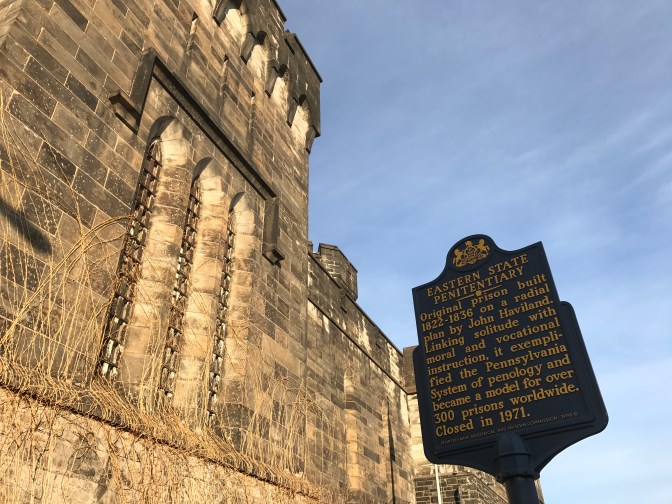


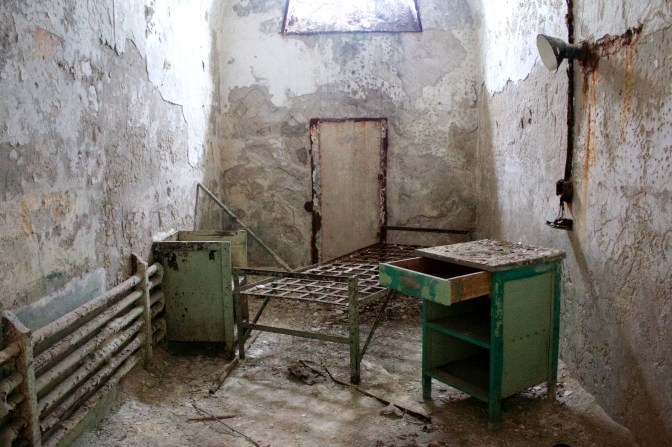
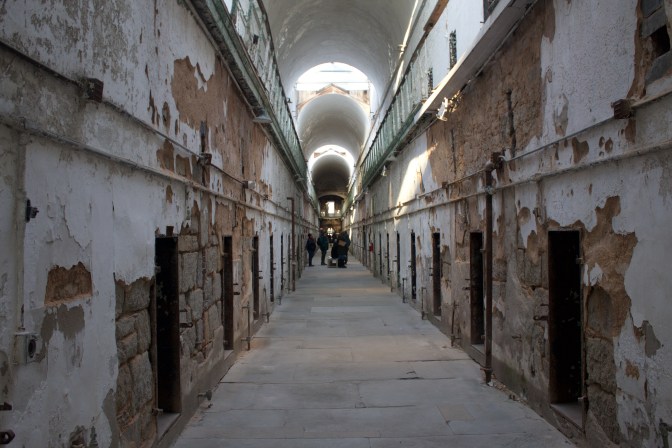
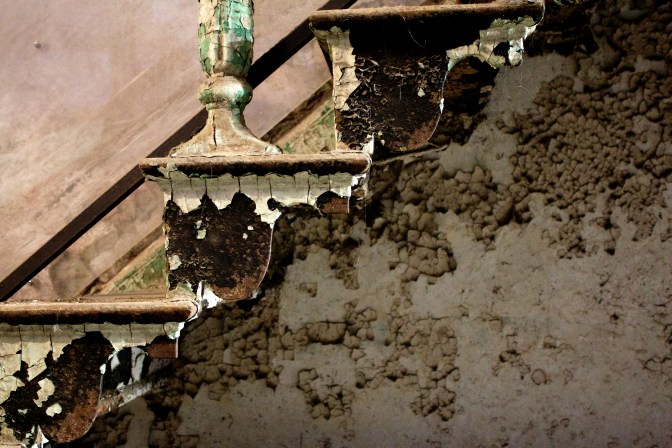
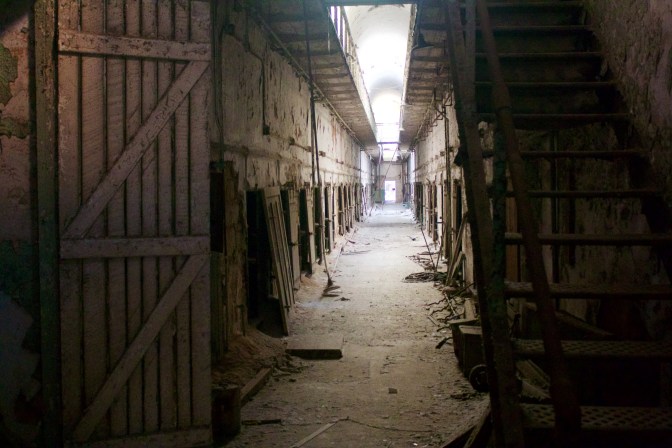

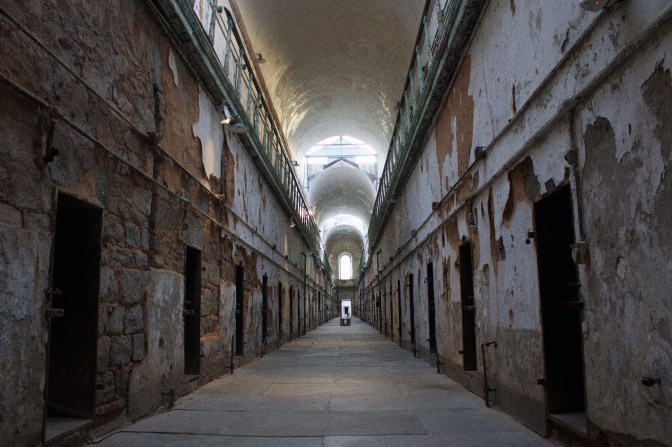


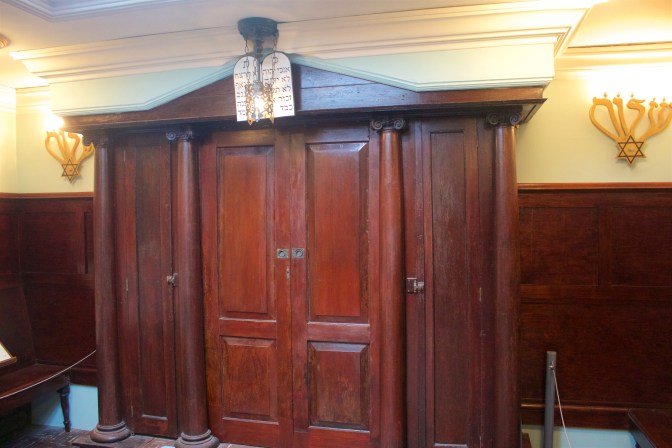

What could have been a very disappointing day turned into a great trip to a favorite museum. Eastern State Penitentiary is open year-round, 7 days a week from 10:00 am – 5:00 pm. Tickets cost $14 for adults, $10 for seniors, and $12 for students and children ages 7-12 (children under 7 are not recommended to attend). In addition to being an informative history of prison life in America, the facility also informs visitors of conditions and problems in prisons in America and throughout the world today. It is well worth the visit. Thanks for coming along on another Voyage of DH!
‘Til next time.
I love it when a little detour ends up taking you through a couple new states. Oops is right! There’s something creepy but also so cool about exploring old prison facilities. Thanks for taking us on a tour of this one!
LikeLiked by 1 person
Glad you enjoyed the tour! Eastern State is a very, very cool site. For as old as it is though, it’s surprising that more people don’t visit.
Long detours are easy when you have a car that eats up miles with comfort.
LikeLike
Reminds me of Alcatraz. I wish I would have taken the time to visit it!
LikeLiked by 1 person
It’s a great spot. If you’re ever back in Philly, you should definitely detour. The tour only takes 45 minutes or so.
LikeLike